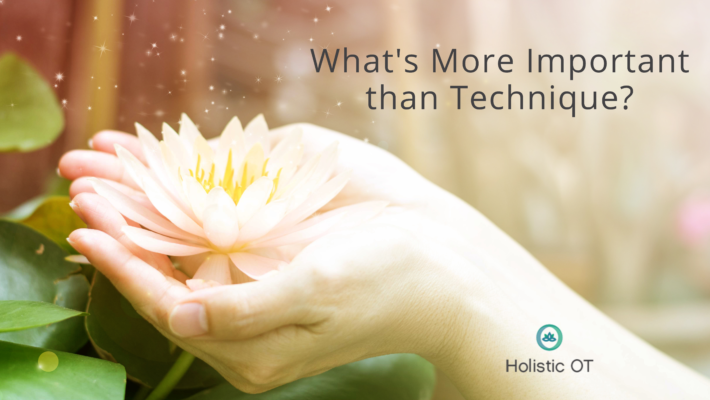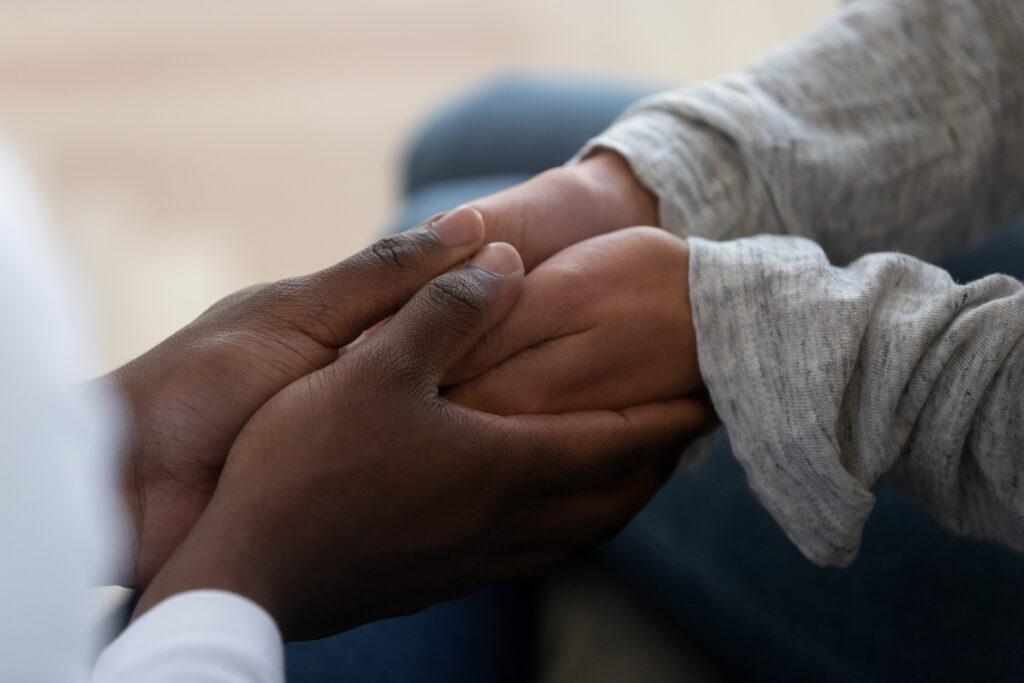
What’s More Important than Technique?
Techniques are important and many have good research supporting beneficial outcomes.
However, not all techniques work 100% of the time.
A person’s belief about a technique’s effectiveness can impact its strength of effectiveness. The practitioner’s belief about a technique may also impact its effectiveness. How a practitioner delivers a technique can be modulated by the amount of love and care they provide.
Dr. Wayne Jonas, the first Director for the Office of Alternative Medicine (now the National Center for Complementary and Integrative Health at the National Institutes of Health), states that 80 percent or more of your healing, health, and wellness comes from within you— your beliefs, expectations, and what is meaningful to you (1).
To engage in techniques, and what the client believes in, the most successfully and to develop a good therapeutic relationship between client and therapist, something more is needed.

That something more is compassion.
We, as health care practitioners and occupational therapists, set the tone with each interaction with our clients. This is known as the “therapeutic use of self.” How we arrive in a session including our mood, thoughts, emotions, eye contact, body language, and how much we care, can all impact how well the interventions can impact a client and their goals.
Compassion is empathy and love in action.
Empathy and compassion are foundational elements of the practice of medicine and vital cornerstones of high quality health care. They are closely related terms, with empathy defined as the ability to sense, feel, and understand another’s emotions, and compassion defined as an emotional response to another’s pain or suffering involving an authentic desire to help. Both are essential in the care of patients, in that empathy (i.e. understanding of patient suffering) is required to spur compassion (i.e. the emotional response involving action aimed at alleviating patient suffering). As such, in patient care the constructs of empathy and compassion, although distinct, are inextricably linked (2).

Research shows that there are many health benefits when a health care practitioner provides empathic health care.
These include:
- Adherence to treatment recommendations.
- Better clinical outcomes.
- Fewer medical errors, malpractice claims, and higher physician retention (3).
Love
Having an open heart throughout each interaction with our “client” or “patient” – the person we are serving – is paramount to successful outcomes. When we love we care about the other person. We can feel their joy and pain. We are able to provide empathy. We can listen to them and really hear them. We can have greater compassion.
Energy
We are beings of energy and vibration who radiate a specific frequency or light. Quantum entanglement or nonlocality theory teaches us that everything is connected, and we may have knowledge of each other’s state no matter the distance. We can feel each other. In fact, we are each other. Perhaps, that’s why we can feel a deep call to help someone out of pain and suffering and offer our love and healing.
“The heart generates the largest electromagnetic field in the body. The electrical field as measured in an electrocardiogram (ECG) is about sixty times greater in amplitude than the brain waves recorded in an electroencephalogram (EEG) (4).”
Self-Love and Self-Compassion
Effects of Mindful Self-Compassion Training on Increasing Self-Compassion in Health Care Professionals
A study investigated the impact of mindful self-compassion (MSC) training on people working in health care. It found that self-compassion and subscale scores showed significant improvement. The participants indicated that self-compassion and positive mind states were integrated into their lives. It is suggested that occupational therapists could assimilate MSC as an approach for their clients and their selves (5).
“Self-compassion is a healthy way of relating to one’s self motivated by a desire to help rather than harm.” (6)
“Clinicians and meditation teachers should be aware that meditation can improve positive prosocial emotions and behaviors (7).”
Up to 70% of health care practitioners experience burnout and moral injury (8).
Health care practitioners are at risk of burnout and moral injury, due to stress that can impact their health and well-being. Most health care practitioners chose a health care profession because they want to help people. They/we are caring people.
Although, hour after hour, day after day, and week after week of seeing tragedies and helping people with their pain can take its toll. This is known as compassion fatigue. This can especially be exacerbated by productivity demands – seeing more patients/clients beyond what is reasonable.
Therefore, it’s imperative that health care practitioners also engage in their own self-compassion and self-care. Yes, mindfulness and meditation can help in this regard. We (the collective we) need to not blame the victim of health care practitioners who are awash in the business of health care. Practitioners need to assess whether the environment they’re serving in is beneficial and supportive to them in their personal and professional development.
How can you be the most loving and compassionate to yourself today?
Part of loving ourselves, our communities, and the collective health care system, is advocating for what is right for our clients/patients, while at the same time advocating for what is best for us and what we need to do our jobs well. This will ensure that we can serve the best while maintaining our health and ability to continue to love and care deeply. That may include speaking up and making adjustments in our work environments for ourselves and others to help health care evolve in the most healing ways.

References:
- Jonas, W. (2018). How healing works: Get well and stay well using your hidden power to heal (1st ed.). California: Lorena Jones Books.
- Patel S, Pelletier-Bui A, Smith S, Roberts MB, Kilgannon H, Trzeciak S, et al. (2019) Curricula for empathy and compassion training in medical education: A systematic review. PLoS ONE 14(8): e0221412. https://doi.org/10.1371/journal.pone.02214122.
- Riess, H, Kelley, JM, Bailey, RW, Dunn, EJ, Phillips, M. Empathy training for resident physicians: a randomized controlled trial of a neuroscience-informed curriculum. J Gen Intern Med. 2012;27:1280–86.
- McCraty, R. (2015). Science of the heart: Exploring the role of the human heart in human performance (Vol. 2) (p. 5). Boulder Creek, CA: HeartMath Institute. DOI:10.13140/RG.2.1.3873.5128
- Susan M. Knier, Julie L. Watson, Jennifer O’Connor Duffy; Effects of Mindful Self-Compassion Training on Increasing Self-Compassion in Health Care Professionals. Am J Occup Ther August 2021, Vol. 75(Supplement_2), 7512515315p1. doi: https://doi.org/10.5014/ajot.2021.75S2-PO315
- Ferrari, M., Hunt, C., Harrysunker, A. et al. Self-Compassion Interventions and Psychosocial Outcomes: a Meta-Analysis of RCTs. Mindfulness 10, 1455–1473 (2019). https://doi.org/10.1007/s12671-019-01134-6
- Luberto, C.M., Shinday, N., Song, R. et al. A Systematic Review and Meta-analysis of the Effects of Meditation on Empathy, Compassion, and Prosocial Behaviors. Mindfulness 9, 708–724 (2018). https://doi.org/10.1007/s12671-017-0841-8
- Cheney, C. Expert: Healthcare Worker Burnout Trending in Alarming Direction, https://www.healthleadersmedia.com/clinical-care/expert-healthcare-worker-burnout-trending-alarming-direction






Leave a Reply